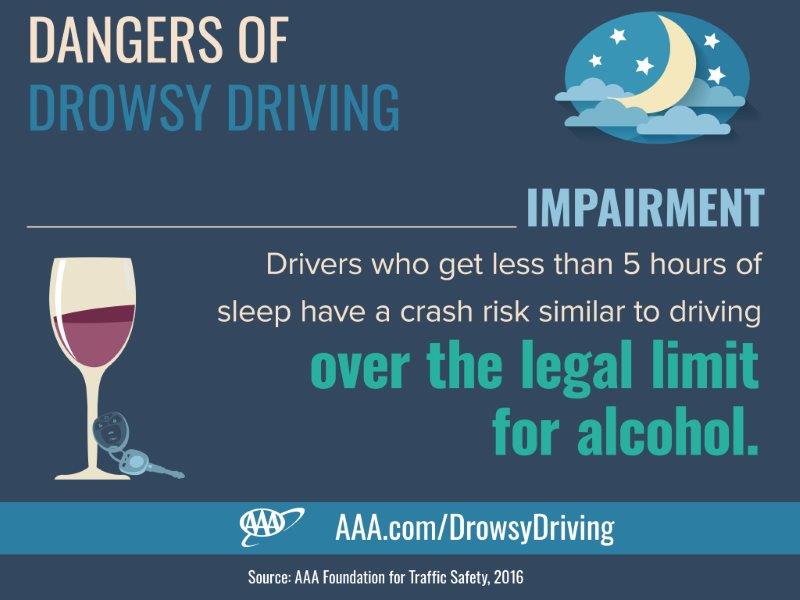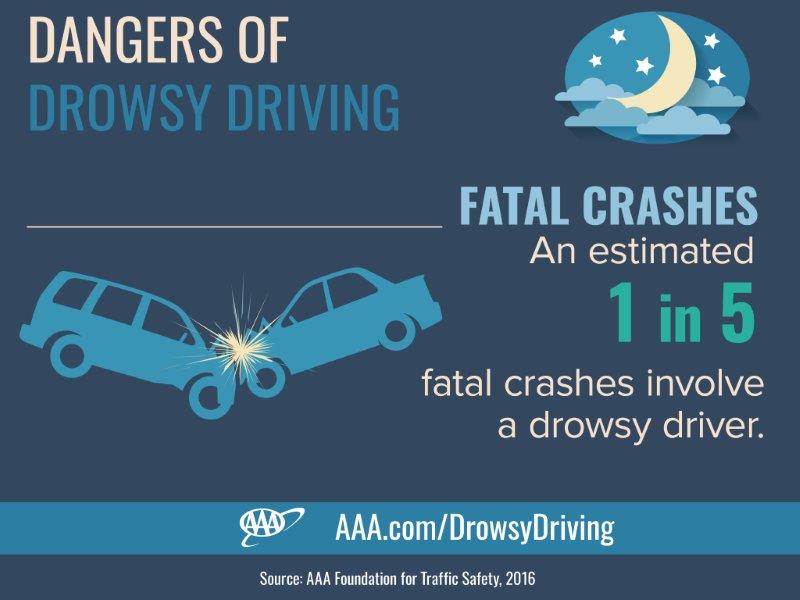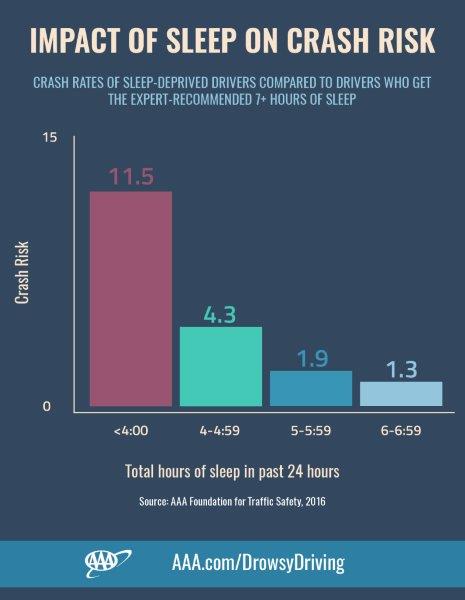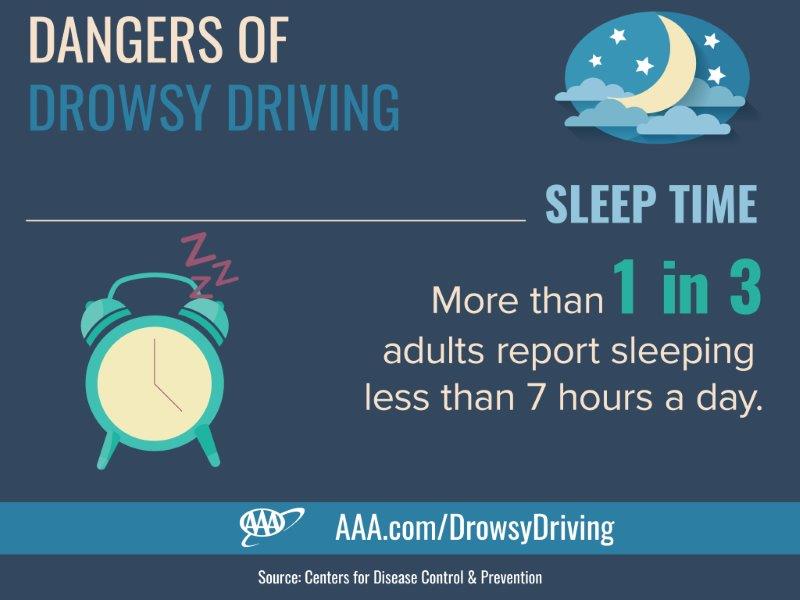Study reveals dangers of getting less than seven hours of sleep
PORTLAND, Ore., – Drivers who miss between one to two hours of the recommended seven hours of sleep in a 24-hour period nearly double their risk for a crash, according to new research from the AAA Foundation for Traffic Safety. Drivers who sleep even less, getting only four to five hours of sleep a night have a crash risk comparable to someone who is driving with a blood alcohol content over the legal limit for alcohol.


With drowsy driving involved in more than one in five fatal crashes on U.S. roadways each year, AAA warns drivers that getting less than seven hours of sleep may have deadly consequences. It’s a growing problem. The Centers for Disease Control and Prevention says that 35 percent of U.S. drivers sleep less than the recommended seven hours daily.
“You cannot miss sleep and still expect to be able to safely function behind the wheel,” said Dr. David Yang, executive director for the AAA Foundation for Traffic Safety. “Our new research shows that a driver who has slept for less than five hours has a crash risk comparable to someone driving drunk.”
The AAA Foundation for Traffic Safety’s report, Acute Sleep Deprivation and Risk of Motor Vehicle Crash Involvement, reveals that drivers missing two to three hours of sleep in a 24-hour period more than quadrupled their risk of a crash compared to drivers getting the recommended seven hours of sleep. This is the same crash risk the National Highway Traffic Safety Administration associates with driving over the legal limit for alcohol.
The AAA Foundation report found that in a 24-hour period, crash risk for sleep-deprived drivers increased steadily when compared to drivers who slept the recommended seven hours or more:
- Six to seven hours of sleep: 1.3 times the crash risk
- Five to six hours of sleep: 1.9 times the crash risk
- Four to five hours of sleep: 4.3 times the crash risk
- Less than four hours of sleep: 11.5 times the crash risk

While 97 percent of drivers told the AAA Foundation they view drowsy driving as a completely unacceptable behavior that is a serious threat to their safety, nearly one in three admit that at least once in the past month they drove when they were so tired they had a hard time keeping their eyes open.
“We often sacrifice sleep, but failing to maintain a healthy sleep schedule can put you, your passengers and others on the road at risk,” says Marie Dodds, director of public affairs for AAA Oregon/Idaho.

Symptoms of drowsy driving can include having trouble keeping eyes open, drifting from lanes or not remembering the last few miles driven. However, more than half of drivers involved in fatigue-related crashes experienced no symptoms before falling asleep behind the wheel. AAA urges drivers to not rely on their bodies to provide warning signs of fatigue and should instead prioritize getting plenty of sleep (at least seven hours) in their daily schedules. For longer trips, drivers should also:
- Travel at times when normally awake
- Schedule a break every two hours or every 100 miles
- Avoid heavy foods
- Travel with an alert passenger and take turns driving
- Avoid medications that cause drowsiness or other impairment
The AAA Foundation report is based on the analysis of a representative sample of 7,234 drivers involved in 4,571 crashes. All data is from the NHTSA’s National Motor Vehicle Crash Causation Survey which comprised a representative sample of police-reported crashes that involved at least one vehicle that was towed from the scene and resulted in emergency medical services being dispatched to the scene.
Established by AAA in 1947, the AAA Foundation for Traffic Safety is a 501(c)(3) not-for-profit, publicly-supported charitable educational and research organization. Dedicated to saving lives and reducing injuries on our roads, the Foundation’s mission is to prevent crashes and save lives through research and education about traffic safety. The Foundation has funded over 300 research projects designed to discover the causes of traffic crashes, prevent them and minimize injuries when they do occur. Visit www.AAAFoundation.org for more information on this and other research.
As North America’s largest motoring and leisure travel organization, AAA provides more than 56 million members with travel, insurance, financial and automotive-related services. Since its founding in 1902, the not-for-profit, fully tax-paying AAA has been a leader and advocate for the safety and security of all travelers. AAA clubs can be visited on the Internet at AAA.com. Motorists can map a route, identify gas prices, find discounts, book a hotel and access AAA roadside assistance with the AAA Mobile app for iPhone, iPad and Android. Learn more at AAA.com/mobile.
AAA news releases, high resolution images, broadcast-quality video, fact sheets and podcasts are available on the AAA NewsRoom at NewsRoom.AAA.com.

